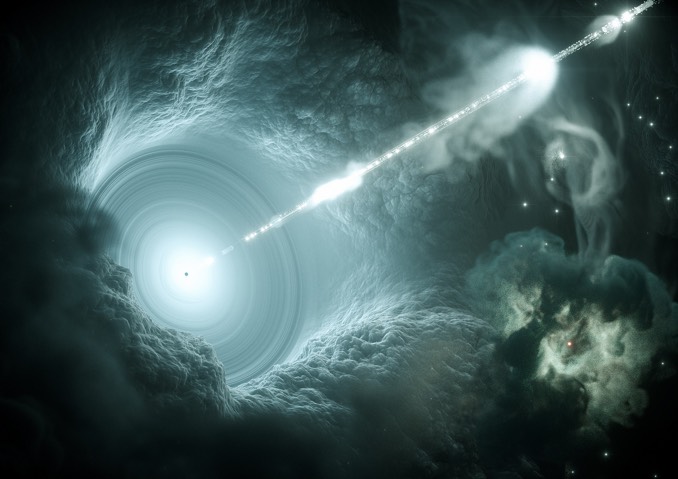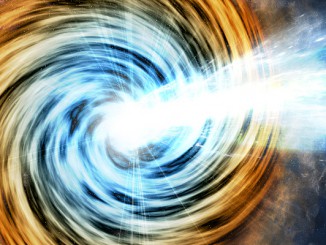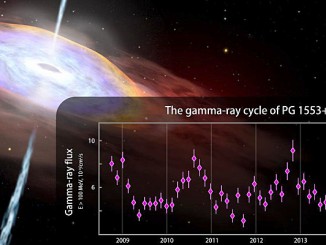
An international team of astronomers has traced a ghostly neutrino back to its source, a spinning super-massive black hole at the heart of a “blazar” galaxy some four billion light years away. The detection and follow-up observations provide a convincing explanation for a mystery that has endured for more than a century: what is the source of the high-energy cosmic rays constantly raining down on Earth from deep space?
The initial detection by the IceCube Neutrino Observatory in Antarctica, and subsequent observations of high energy radiation from the same source by space telescopes and ground-based observatories, indicate such black holes act as the particle accelerators responsible for at least some of those cosmic rays.
“The evidence for the observation of the first known source of high-energy neutrinos and cosmic rays is compelling,” said Francis Halzen, a University of Wisconsin–Madison professor of physics and the lead scientist for the IceCube Neutrino Observatory.
Two papers published this week in the journal Science discuss the neutrino detection, follow-up observations and interpretation of the data.
Tracing the path of an electrically charged cosmic ray particle is not possible because the trajectory is affected by magnetic fields. But neutrinos have little or no mass, travel at nearly the speed of light, are not electrically charged and rarely interact with normal matter. As a result, their trajectories through space are not affected by magnetic fields or passage through gas, dust or even planets.
As a result, the neutrino detected by the IceCube observatory at the Amundsen-Scott South Pole Station on 22 September, 2017, could be traced back to a specific point in the sky, a galaxy in the constellation Orion known as TXS-0506+056 that is some four billion light years from Earth. The galaxy is a known blazar, that is, one harbouring a super-massive black hole that sends out twin jets of high-energy radiation, one of which happens to be aimed at Earth.

When the neutrino collided with an atomic nucleus at or near the IceCube detector, an automatic alert went out to the astronomical community, triggering multiple searches across the electromagnetic spectrum. NASA’s Fermi gamma ray telescope was the first to detect higher activity from the blazar within 0.06 degrees of the IceCube source. Other instruments operating at optical, radio and X-ray wavelengths also made detections.
“Fermi has been monitoring some 2,000 blazars for a decade, which is how we were able to identify this blazar as the neutrino source,” said Regina Caputo, a coordinator for the Fermi Large Area Telescope collaboration. “High-energy gamma rays can be produced either by accelerated electrons or protons. The observation of a neutrino, which is a hallmark of proton interactions, is the first definitive evidence of proton acceleration by black holes.”
Said Halzen: “Now, we have identified at least one source of cosmic rays because it produces cosmic neutrinos. Neutrinos are the decay products of pions. In order to produce them, you need a proton accelerator.”
Cosmic rays are made up mostly of fast-moving protons accelerated to enormous energies, packing up to 100 times the punch of particles studied in the Large Hadron Collider, the world’s most powerful atom smasher. Theory predicts neutrino emission will be accompanied by gamma radiation, but many questions remain about how blazars are able to boost such particles to such extreme energies.
But the IceCube detection promises to open up a new window on the Universe.
“The ability to globally marshal telescopes to make a discovery using a variety of wavelengths in cooperation with a neutrino detector like IceCube marks a milestone in what scientists call multimessenger astronomy,” Halzen said.



